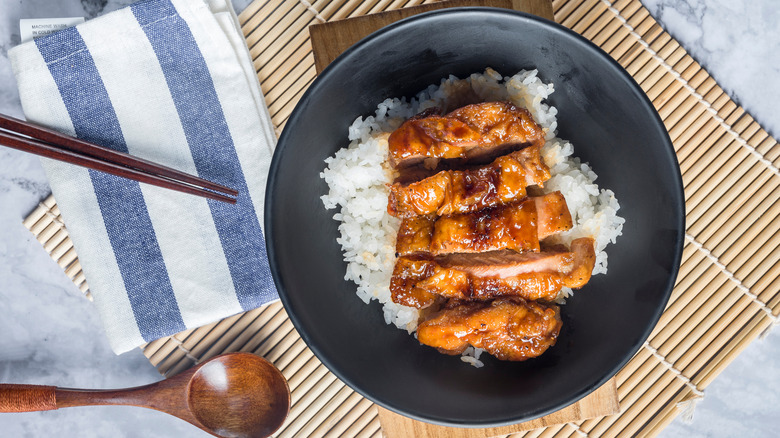The History Of Seattle-Style Teriyaki
Seattle is a hip city known for many things, including the original Starbucks location, a grunge music scene, and hosting an outdoorsy lifestyle (via On the Go). But the Emerald City is also home to some pretty unique food inventions. The Seattle dog is a delicious yet admittedly bizarre mashup of a hot dog and a bagel. The bun is slathered with cream cheese and topped with things like sautéed onions, jalapeños, or kimchi. But Seattle doesn't just stop at coffee and hot dogs. This city also has its own take on teriyaki.
Teriyaki sauce, as we know it, did not come from Japan, although the name is Japanese. According to Toshi's Grill, Teriyaki is a Japanese term that describes "a traditional cooking technique of grilling meat or fish over an open flame, while basting with sauce." But the smokey-sweet chicken dish we know is uniquely American and was created by immigrants (via Tasting Table).
Japanese in name, but Korean at heart
The story of Seattle teriyaki starts with Toshi Kasahara, widely regarded as the grandfather of the dish. In 1976, the Japanese immigrant opened Seattle's first teriyaki joint. Locals immediately flocked to the shop, unable to get enough of the teriyaki. Over the following decades, hundreds of teriyaki shops popped up across the city, making Seattle famous for this new style of teriyaki (Toshi's Grill).
However, much of the prominence and fame around Seattle-style teriyaki should be credited to another group — Koreans. According to Eater, John Chung, a Korean immigrant, moved to Seattle in 1983, not knowing anything about Kasahara's popular shop. He had already been selling his own version of teriyaki in his failed Los Angeles restaurant, but it differed from Kasahara's. While Kasahara's meat was slow-cooked and served on a bed of rice, Chung's version utilized fast cooking methods and was served on a sandwich.
Upon moving to Seattle, Chung would soon open many shops around the city serving teriyaki and "train an estimated hundred-plus other Korean immigrants in the business," according to Eater. Many shops continue to be run by Koreans, and this is the version most widely consumed today.

